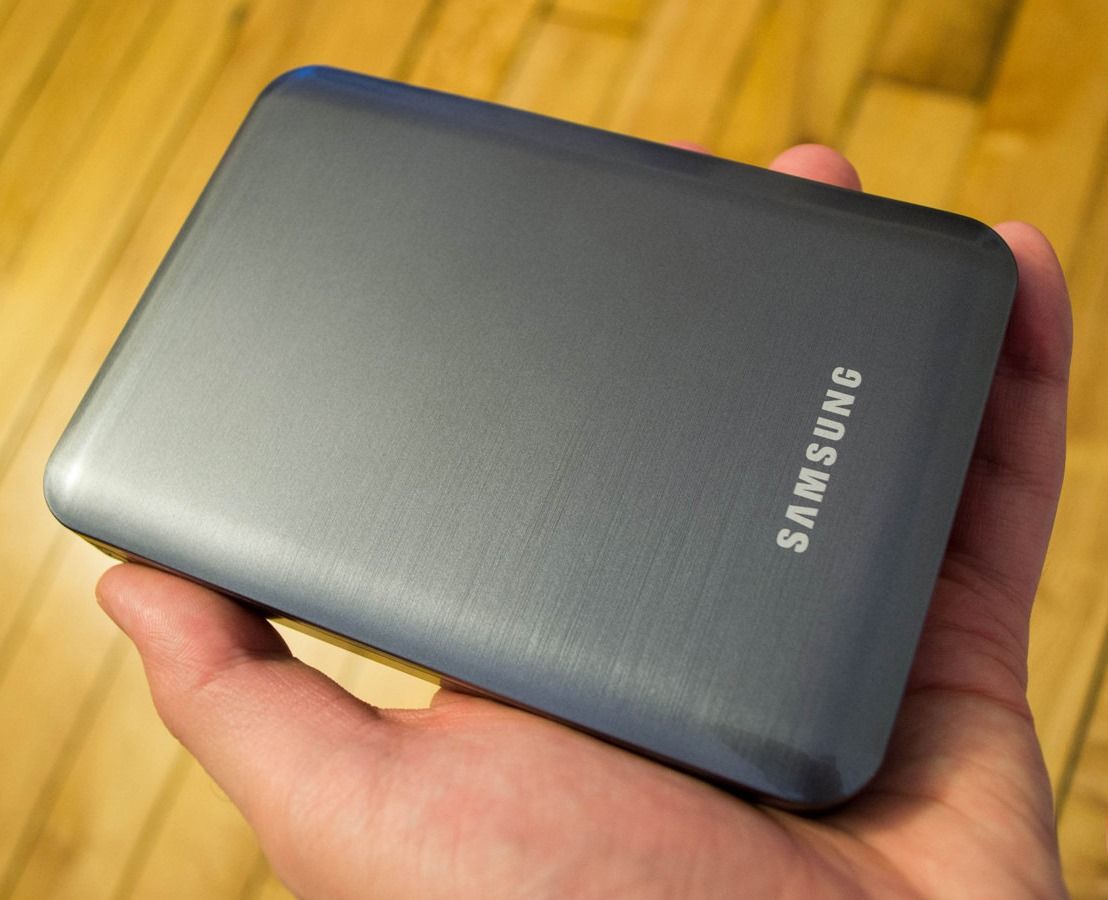Oh, you have a 64GB microSD card in your phone? That's cute, but Samsung has this 1.5TB wireless hard drive that can provide untold hours of digital entertainment streamed directly to your Android device via the hard drive's built-in WiFi access point. That's a lot of space you can fill up with content, but how well does it work?
How It Works
The Samsung Wireless drive is essentially a USB 3.0 hard drive in a small plastic external enclosure with a battery and wireless access point. The build quality seems okay, but the unit I received has a warped corner where the plastic is separated a bit from the casing. You connect to the drive via Seagate's dedicated app for Android, although there are a few other ways to access the files on the drive. When you're connected, the video, audio, and images on the drive are available for local streaming on your Android phone or tablet. It can also accommodate up to 5 simultaneous connections, so you can share your media with others.
The device itself has only a single LED to indicate its state. Green means it's starting up or charging, and flashing blue means it's producing a wireless access point for you to connect to. Any information or settings tweaks beyond that require the aforementioned control app. Even if you access the files in a different way (more on that later), the app is needed to change the default password and see the battery level. So you kind of have to use it.
Note the warped corner on the right pic
Loading files onto the drive is best accomplished with a computer and the included USB 3.0 cable – just plug it in and transfer over your content. In addition to the USB 3.0 port, there is a standard square USB for charging only. Note, you can also move files over to the drive over the WiFi connection, so it's actually useful as a backup device too.
But Does It Work?
Once you figure out the LED status indicators, connecting is fairly simple. The hard drive has a random AP name, and you can connect via your regular system settings. It shows up on all devices, not just Android. The Seagate app lists your content in a filtered view (videos, photos, and images), though I'm not terribly impressed with the quality of this app. It feels sluggish and the interface is not very intuitive. When you play content in this app it's not awesome. The video player doesn't hide or dim on-screen nav buttons and it can only render files with the hardware decoder. The music and photo viewers are a little better, but I still don't want to use this app very much.
There is a switch in the settings to have video routed to an outside app, which is really what you should do. That way you can stream the file to an app like VLC or MX Player that can decode more files. Since a 1.5TB drive is probably going to host mostly videos (I'd assume) this makes the device more attractive. If you want it mostly for tunes, there's a bit more of a runaround.
The Samsung Wireless Media Drive is essentially working as a DLNA server. If you connect it to other devices (like a PC) the files are accessible via normal DLNA tools. The same is true for Android, if you have the right apps. For example, Samsung's default file manager app sees the drive as a DLNA box. The directory listing is sometimes buggy for me going this route, but it does work.
Streaming video quality regardless of connection method is mostly very good, although there are occasional buffering hiccups. I mean, it looks good when it's actually playing. 1080p video was watchable, but 4K video tends to buffer too much to be watchable. I have no complaints about music or images outside of the mediocre official app. The drive did also freeze up on me once, requiring a full discharge of the battery before I could regain control (ugh).
There are two problems with this device. First, when it is plugged into power or a computer, the WiFi AP shuts off automatically. I have not seen any way to prevent that from happening, which means you're relying entirely on the built-in battery. Samsung says it will last about 7 hours on a charge, which is mostly accurate. I'd maybe place it closer to 6 hours from my testing.
The other problem is something you might have already suspected. This is an access point, not a hotspot with an internet connection. So if you've connected to this device, you can't have internet access at the same time. This makes it not terribly useful for most situations where you'd want to stay connected or get notifications even while watching video. Maybe this product would be cool for a long road trip or plane ride, but otherwise the $180 price point seems too high considering the somewhat buggy performance. It's not listed on Amazon in the US yet (as of this posting), but some retailers have it up for a little under the MSRP.

